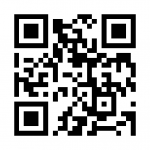The Small Fire Ant, Wasmannia auropunctata, is considered one of the hundred most harmful invasive species in the world by the International Union for Conservation of Nature (IUCN). The ant was identified in Israel in 2005 and distributed to 285 settlements and areas (Weiden, A. Vernan, A. 2018). According to expert estimates, Israel is expected to lose over two billion ILS every year due to ant damage in settlements, institutions, recreational areas, agriculture and tourism (Tzaban, S. and Kotinsky, T. 2013).
The fire ant lives up to its name – it is small (1.1 mm) – but does great damage! Its bite is painful and causes a very painful burn-like local lesion with a blister for about half an hour to several hours. Afterwards, local itching remains for 2-14 days and sometimes also a secondary infection. Anaphylactic shock requiring emergency evacuation have been documented in cases of an allergic reaction. The bites occur mainly during the ant’s main activity season, from May to November. Bites mainly occur when sitting near ant nests and trails, as well as sitting under trees on which ants are active, for example when sitting on lawns, benches, picnic tables, swimming pools, etc. In particular weather conditions or severe weather, it will also enter and nest inside buildings. The ant is defined as a hazard according to its meaning in section 53(a) of the Public Health Ordinance and is a sanitary pest that endangers human health and requires treatment by the authority/institution in the infested areas.
In the summer of 2020, the ecological garden team discovered several spots at the Technion with suspected presence of the small fire ant, assisted by the guidance of Hila and Tal from an ecological monitoring company specializing in the small fire ant, the team surveyed sample points around the campus. In another monitoring operation carried out by Bosemet Segal, under the guidance of the company’s experts throughout the Technion in November 2020, the fire ant was discovered in about half of the points sampled outside and inside buildings. Checking reports of bites on the Technion reporting website shows reports of bites in several places at the Technion.

Distribution of the fire ant on the Technion campus, as of November 2020. Red dots were found to be infected; blue dots were found to be clean.
This map should not be seen as a commitment to the current state of infestation or a recommendation for pest control or conservation.
Please fill in the reporting form for the benefit of monitoring the fire ant phenomenon on campus.





